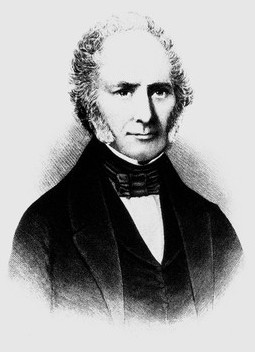Electromagnets, Their Uses, and Origin.

January 6, 2023
Electromagnets were an amazing and brilliant discovery and they have been around for over two hundred years. Electromagnets have had many uses throughout history, contain many ways to operate, and have many different forms and sizes.
In the year 1824, William Sturgeon invented the first electromagnet in a horseshoe-like shape. The “horseshoe” was iron with eighteen turns of bare copper wiring. The iron was varnished from the windings and when the current passed through the coils, it then became magnetized. But these electromagnets were later improved upon by Joseph Henry, an Ameri can scientist in the 1830s. By using insulated silk thread, inspired by the galvanometer, Henry was able to loop more coils that could eventually support five hundred pounds. Both Sturgeon and Henry made and improved upon these electromagnets to enable electrical energy to be used in the design of controllable machinery. The electromagnet was soon put to use in telegraph sounders.
can scientist in the 1830s. By using insulated silk thread, inspired by the galvanometer, Henry was able to loop more coils that could eventually support five hundred pounds. Both Sturgeon and Henry made and improved upon these electromagnets to enable electrical energy to be used in the design of controllable machinery. The electromagnet was soon put to use in telegraph sounders.
In an electromagnet, an electrical current flowing through the coils creates a magnetic field around the wire. A stronger magnet can be made of iron or other ferromagnetic materials placed with the coils winding around it. With a ferromagnetic core, the magnetic field is increased by thousands of times the strength of the coil alone. But the strongest of electromagnets can’t use a ferromagnetic or iron core due to saturation. Saturation in magnets is the state reached when an abundance of an external magnetic cannot increase the magnetization of the material any further. The moving charges create magnetic fields, so when coils of a wire in an electromagnet have an electrical current, it causes the coils to act as magnets. An electromagnet is different from a permanent magnet. Unlike a permanent magnet electromagnets can easily be changed by increasing or decreasing the electrical current. The poles of an electromagnet also differ from others. The poles on an electromagnet can be switched with whiners but the poles on other magnets tend to stay the same.
Electromagnets aren’t always used to pick up things made of heavy metal. Electromagnets can be used in MRI machines, hypothermia therapy, mass spectrometers, particle accelerators, and more. In the medical field, an MRI machine means Magnetic Resonance Imaging. An MRI is used in radiology to form pictures of the anatomy and its scanning. MRI scanners use the strong magnetic fields from electromagnets to generate images of the organs in the body. But anyone wanting to use an MRI machine must abi de by the “no magnet rule”. MRI electromagnets are always on so the presents of iron or any other materials are attracted to the machine affecting the image. MRIs are used to find cancer, tumors, injuries, anomalies, sclerosis, stroke, and dementia among others. These issues lead to hypothermia therapy. Hypothermia therapy is a type of medical treatment in which the body’s tissues are exposed to higher temperatures; in efforts to treat cancer and often Lyme disease. Hypothermia treatment using electromagnets is still an experimental treatment for cancer. Magnetic nanoparticles, (a class of particles that can be manipulated with magnetic fields) can transform electromagnetic energy from an external high-frequency field heat. In many industrial applications, this heat is undesirable, however, it is the base of hypothermia treatment.
de by the “no magnet rule”. MRI electromagnets are always on so the presents of iron or any other materials are attracted to the machine affecting the image. MRIs are used to find cancer, tumors, injuries, anomalies, sclerosis, stroke, and dementia among others. These issues lead to hypothermia therapy. Hypothermia therapy is a type of medical treatment in which the body’s tissues are exposed to higher temperatures; in efforts to treat cancer and often Lyme disease. Hypothermia treatment using electromagnets is still an experimental treatment for cancer. Magnetic nanoparticles, (a class of particles that can be manipulated with magnetic fields) can transform electromagnetic energy from an external high-frequency field heat. In many industrial applications, this heat is undesirable, however, it is the base of hypothermia treatment.
Electromagnets are extremely strong and are used worldwide daily. The electromagnets have been used for over two hundred years and will more than likely be used for two-hundred more.

